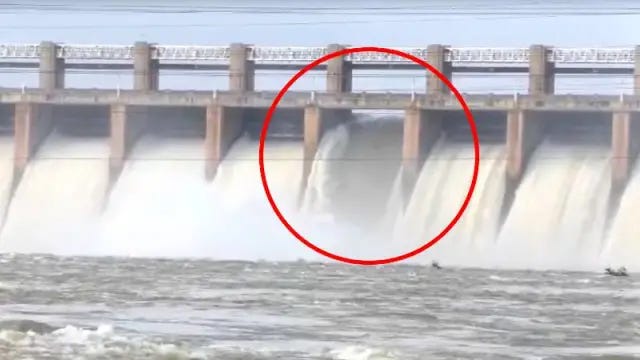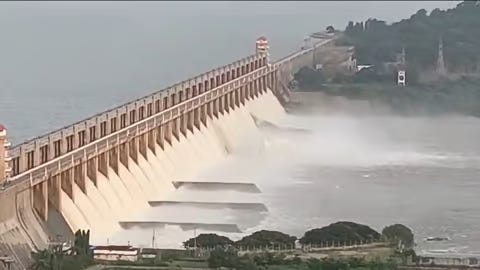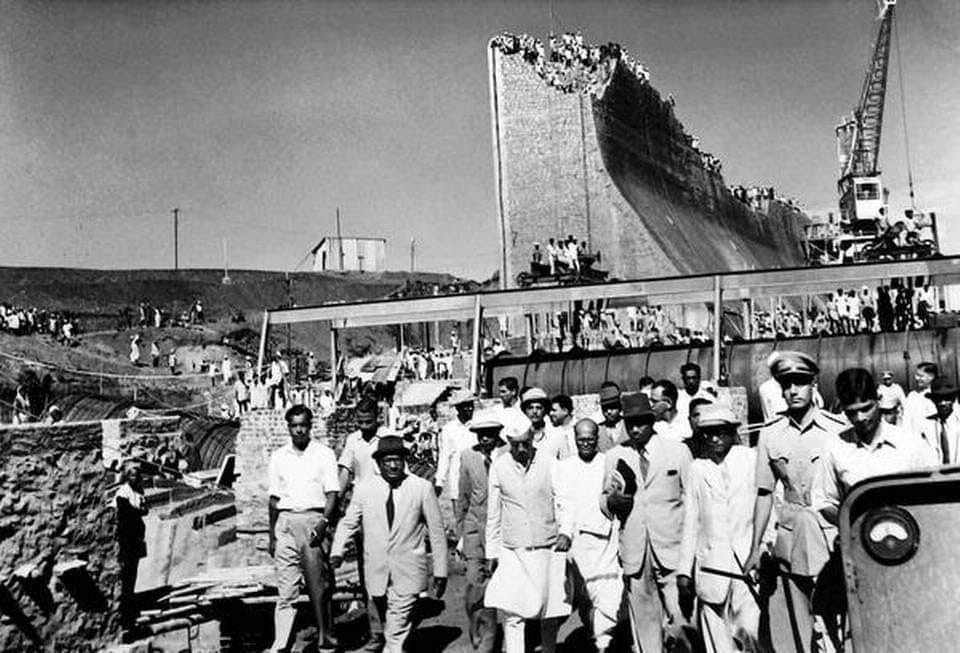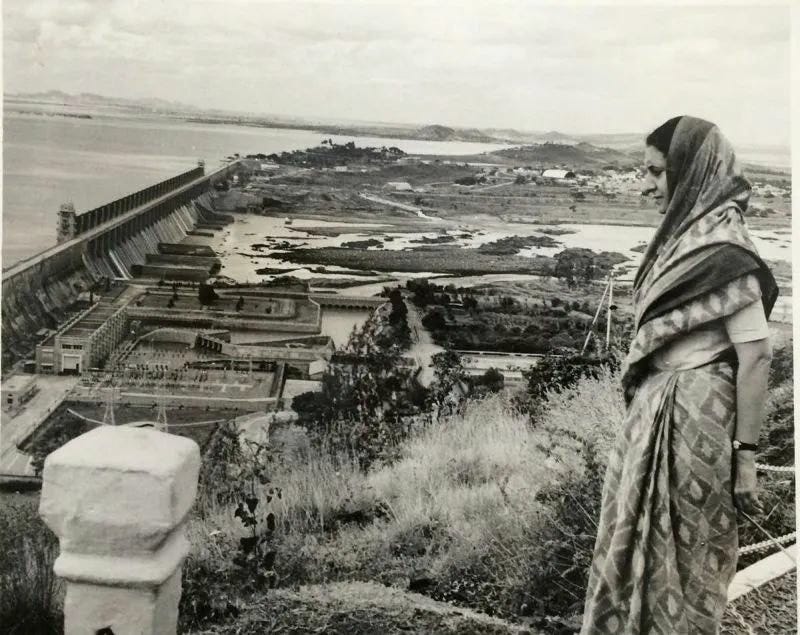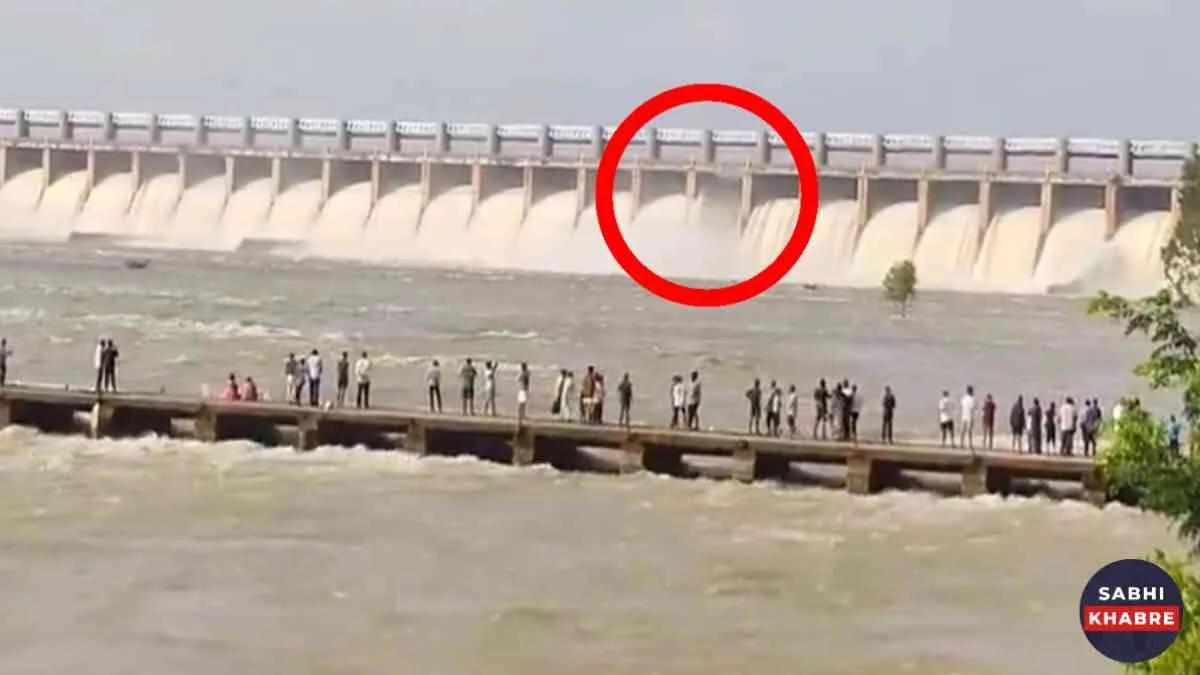Tungabhadra Dam Incident: One of the Crest Gates Gets Washed Away
Fortunately, No Loss of Life and the Dam, located in Karnataka, is Safe
Tungabhadra Dam Incident: A Detailed Overview
On the night of August 10, 2024, at 10: 50 PM a significant incident occurred at the Tungabhadra Dam in Karnataka, India, when one of its crest gates, specifically Gate No. 19, was unexpectedly washed away. This event marked a major concern for dam safety and water management in the region, particularly given the dam's crucial role in supporting agriculture and providing water resources to Karnataka, Andhra Pradesh, and Telangana.
Extent of Damage
The failure of the gate was triggered by the breaking of its chain link, leading to the entire gate being washed away. This resulted in the uncontrolled release of approximately 35,000 cubic feet per second (cusecs) of water through the damaged gate, significantly affecting the dam's water management system.
Management Response
In response to the crisis, the authorities took immediate action by opening all 33 gates of the dam to manage the water flow and prevent further damage. This measure increased the total water release to over 100,000 cusecs. Given the gravity of the situation, alerts were promptly issued to downstream villages in the Ballari and Raichur districts, warning them of potential flooding. Additionally, experts from Chennai and Andhra Pradesh were called in to assess the situation and assist with mitigation efforts.
Downstream Impact
Fortunately, there were no reports of loss of life due to the incident. However, flood warnings were issued for the districts of Koppal, Vijayanagara, Ballari, and Raichur. Despite the significant water discharge, downstream structures like the Rajollibanda diversion scheme and Sunkesula barrages were able to handle the increased flow, ensuring the safety of the regions affected by the discharge.
Repair Timeline
The repair of the damaged gate is a complex process that can only commence after reducing the dam's water storage from 105 TMC (Thousand Million Cubic Meters) to around 60-65 TMC. This requires draining approximately 20 feet of water from the reservoir. Dam authorities have estimated that the repair process will take at least a week to complete, given the scale of the damage and the need for precise engineering work.
Cause
The exact cause of the gate failure is still under investigation. However, several potential factors have been suggested:
Heavy water flows due to recent rainfall in the dam's catchment areas may have exerted excessive pressure on the aging structure.
Wear and tear over the dam's more than 70 years of operation could have contributed to the failure.
Maintenance issues are also under scrutiny, although dam officials have stated that all necessary maintenance work was completed in May 2024.
This incident is particularly noteworthy as it marks the first major safety issue at the Tungabhadra Dam in its seven-decade history. Completed in 1953, the dam is renowned as India's largest stone masonry dam and is a critical resource for farmers across Karnataka, Andhra Pradesh, and Telangana.
Tungabhadra Dam: A Historical and Strategic Overview
The Tungabhadra Dam, also known as Pampa Sagar, stands as a significant water infrastructure project in India, playing a vital role in the region's irrigation, power generation, and flood control. Its historical roots and strategic importance make it a key asset in the management of water resources across multiple states in South India.
Location and River
The Tungabhadra Dam is strategically situated across the Tungabhadra River, a major tributary of the Krishna River, at the confluence of Hosapete and Koppal in Karnataka, India. This location was chosen due to the river's substantial flow and its potential for supporting extensive irrigation and hydroelectric power generation.
Project Type
The Tungabhadra Dam is an interstate project that has evolved over time, initially planned as a joint venture between the Kingdom of Hyderabad and the Madras Presidency. After India gained independence, the project became a collaborative effort between the Mysore and Hyderabad governments. Today, it serves the states of Karnataka, Andhra Pradesh, and Telangana, reflecting its broad regional significance.
Planning and Construction Timeline
The concept of the Tungabhadra Dam dates back to 1860, when it was first proposed by Sir Arthur Cotton, a British engineer renowned for his work on irrigation projects in India. However, the formal inauguration and foundation stone laying of the project only took place on February 28, 1945. The dam's construction was completed in 1953, marking the beginning of its crucial role in the region's water management.
Purpose
The Tungabhadra Dam was designed as a multipurpose project with several key objectives:
Irrigation: The dam supports extensive irrigation across Karnataka and Andhra Pradesh, benefiting large tracts of agricultural land.
Electricity Generation: It houses hydroelectric power facilities that contribute to the region's energy supply.
Flood Control: The dam also plays a critical role in controlling floods in the surrounding areas, protecting lives and property.
Irrigation
The dam's irrigation capabilities are extensive, serving multiple states through a network of canals. In Karnataka, the left bank canals provide water to vast agricultural lands, while in Andhra Pradesh, the right bank canals support the Rayalaseema region, known for its agricultural productivity.
Power Generation
Hydroelectric power generation is another significant function of the Tungabhadra Dam. The initial installation of four units, each with a capacity of 9 MW, took place in 1957-58. These units were distributed between the Dam Power House and the Hampi Power House. Further expansion under Stage II in 1964 added additional units, enhancing the dam's power generation capacity.
Water Sharing
The Krishna Water Disputes Tribunal has allocated 220 TMC (Thousand Million Cubic Feet) of water use from the Tungabhadra project. Of this, Karnataka is allocated 151 TMC, while Andhra Pradesh receives 79 TMC. This allocation underscores the dam's critical role in managing water resources for multiple states.
Unique Features
The Tungabhadra Dam holds several unique distinctions:
It is the largest stone masonry dam in India, a testament to the engineering capabilities of the time.
The dam is one of only two non-cement dams in India, the other being the Mullaperiyar Dam in Kerala.
It was constructed using surki mortar, a traditional mixture of mud and limestone, which has withstood the test of time for over seven decades.
Lessons from Recent Mishap
The recent incident involving the washing away of a crest gate at the Tungabhadra Dam has highlighted several important lessons for the future:
Regular Maintenance: The incident underlines the importance of thorough and frequent inspections, even when recent maintenance has been conducted.
Age-Related Vulnerabilities: With over 70 years of operation, the dam's aging components may require modernization to prevent similar incidents.
Emergency Preparedness: The prompt response in managing water release and issuing alerts demonstrates the effectiveness of robust emergency protocols.
Water Management Practices: The near-full status of the dam early in the monsoon season raises concerns about water management strategies and the need for more conservative storage practices.
Transparency and Communication: The incident revealed gaps in immediate public communication, emphasizing the need for better information dissemination during emergencies.
Inter-State Cooperation: The event underscores the critical importance of coordination between states in managing shared water resources and responding to crises.
Long-Term Planning: As climate patterns evolve and infrastructure ages, the importance of long-term planning for the safety and efficiency of such critical water infrastructure cannot be overstated.
Ensuring the Safety and Legacy of Tungabhadra Dam
a.) The Unique Challenges of a Stone Masonry Dam
The Tungabhadra Dam, constructed using traditional stone masonry techniques, requires far more meticulous care and regular maintenance compared to modern dams built with cement. The recent incident involving the failure of a crest gate highlights the vulnerabilities inherent in such a structure, underscoring the necessity for routine inspections and proactive interventions to maintain its integrity.
b.) The Danger of Complacency
Despite the absence of loss of life or significant downstream flooding, the recent mishap should not lead to complacency among dam authorities. The incident serves as a stark reminder that the age and construction type of the dam require constant vigilance. Emergency measures successfully prevented disaster this time, but the underlying issues must be addressed to avert future risks.
c.) Reflecting on Nehru's Vision
The Tungabhadra Dam is a symbol of the visionary leadership of India’s first Prime Minister, Jawaharlal Nehru, who saw these massive infrastructure projects as the "temples of modern India." Constructed during the First Five-Year Plan, the dam represents the ambition and forward-thinking of early independent India. However, preserving this legacy requires ongoing investment and modernisation to ensure that these "temples" continue to serve their purpose effectively.
d.) The Imperative for Vigilance and Investment
Maintaining the safety and functionality of the Tungabhadra Dam—and other similar infrastructures—is not merely about preserving history. It is about securing the livelihoods of millions who depend on these critical resources. The incident at the dam is a call to action for sustained vigilance, continuous investment in maintenance, and adaptive management strategies to meet the challenges of aging infrastructure in a changing world.




